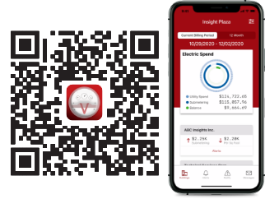Submeter Calibration: Why and How
A quick guide to making sure your submeters are accurate
Inaccurate submeters can lead to thousands of dollars in lost revenue. In this guide, we break down why submeter calibration matters, how to do it correctly, and what tools you’ll need to ensure your electric submeters are reading accurately.
In our experience, about 37% of submeters have been installed incorrectly. And all those inaccurate submeters cost many, many thousands of dollars in bad readings, misallocated utility costs, unexpected equipment downtime, or even equipment replacement.
No one wants to waste resources or otherwise set money on fire. So let’s take a look at what’s involved in making sure your meters are reading correctly, aka meter calibration.
Why Do Submeters Need Calibration?
Meter calibration refers to the process of comparing a (sub)meter to a known standard to ensure that the meter is reading accurately. Inaccurate meters cost money in multiple ways:
- Lost time
- Misallocation of utility expenses
- Unexpected equipment downtime
- Equipment replacement
- Legal disputes
- Tenant dissatisfaction
What's the Difference Between "Meter Calibration" and "Meter Validation"?
Meter calibration refers to checking that the meter is set up correctly and performing accurately as compared against a reference standard.
Meter validation refers to checking that the meter is measuring accurately, is measuring the space or equipment intended, and is operating correctly within a larger system.
How Do You Calibrate Electric Meters?

STEP 1: GATHER YOUR TOOLS (AND PEOPLE)
The first tool you need to calibrate a meter is fairly obvious – a power analyzer (we use Dranetz and Fluke portables) that you have certified annually as the power-measuring device you are referencing the meter against.
The second tool is more unexpected: you need the right software for the meter in question.
Fun fact: Each meter manufacturer has its own software that you need to download, understand, and keep up-to-date (because software!). Since it is rare for a building to have only one manufacturer for all of its submeters, this can become a management hassle. For perspective, we keep and regularly update 15 different types of meter software in our system.
Finally, if a meter needs troubleshooting, you also need an electrician to handle any installation issues. However, be aware that electricians only install meters and change/service the current transformers (CTs). A newly installed meter will not default to anything useful and has to be set up using the correct CT ratio and time-of-use functions, services an electrician will not do for you. If you want to be sure your meter is set up and operating correctly, you need a calibration specialist.
STEP 2: COMPARE AGAINST A STANDARD
Now it's time to run an apples-to-apples comparison. Here's the process we use for a straightforward, no-error calibration check (see below for common error messages):
Hook up the Dranetz or the Fluke portable to the same service as the meter to be tested. From the portable, get amps, power factor, and instantaneous kW usage. Then set the submeter and the portable to zero and let them run for 1.5–2 hours. At that point, compare the meter reading to the portable reading. We like to see the meter reading within 5% of the portable. If not, we recommend servicing or replacing the meter or maybe a CT, depending on what we’re seeing at the site. But if the meter is reading within 5% of the reference unit, it's considered to be within industry standards (i.e., good to go).
Common Meter Error Messages
- Loss of voltage: Meter is not getting enough power.
- Phasing error: CT is either dead or installed in the wrong direction.
- Low battery: This warning is not just for smoke detectors!
- Display error: LCD display has gone bad.
Final Tips for Accurate Submeter Calibration
- Make sure you work with someone who has their power analyzers certified by the manufacturer every year.
- Expect meter calibration to take 2–4 hours per meter.
- Check 1/3 of your submeters for accuracy every year (in addition to troubleshooting any problem meters). Both electric and BTU meters should be calibrated regularly. Your utility provider is responsible for the accuracy of its meters, but that doesn’t mean it will verify them regularly. Consider installing submeters downstream from the utility master meter, so you can check the accuracy of your utility provider’s meter(s) every month by making sure your submeters add up to the total from the utility (this verification is part of our regular billing service).
FAQs on Meter Calibration
1. What is submeter calibration and why is it important?
Submeter calibration is the process of comparing a submeter’s readings against a certified reference device to ensure accuracy. Without calibration, submeters can produce inaccurate data, leading to billing errors, equipment issues, and tenant disputes.
2. How often should submeters be calibrated?
Industry best practice is to check one-third of your submeters annually, along with any units showing potential inaccuracies. Regular calibration ensures accurate billing and early detection of equipment issues.
3. What are common signs a submeter needs calibration?
Frequent signs include mismatched readings, error codes like “loss of voltage” or “phasing error,” and inconsistent usage data that doesn’t align with operational patterns.
Curious how to trim down energy usage?
See how MSK saves using RTEMAbout utiliVisor
Your tenant submetering and energy plant optimization services are an essential part of your operation. You deserve personalized energy insights from a team that knows buildings from the inside out, applies IoT technology and is energized by providing you with accurate data and energy optimization insights. When you need experience, expertise, and service, you need utiliVisor on your side, delivering consistent energy and cost-saving strategies to you. What more can our 45+ years of experience and historical data do for you? Call utiliVisor at 212-260-4800 or visit utilivisor.com

